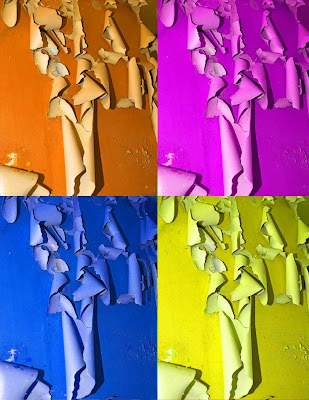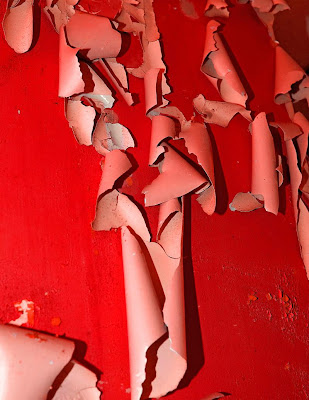

1. Open Photoshop
2. Open your image by going to the File menu and selecting Open.
3. Choose File and click Open
4. Make sure the Layers Palette is visible, if not go to Window - > Layers
5. Copy your background using the keyboard shortcut CNTRL + J (Command J)
6. Click on the Cookie (Create new fill or adjustment layer), choose "hue/saturation"
7. Make the top layer orange by sliding the hue slider to the right (about + 30)
8. Use the Keyboard shortcut CNTRL + E (Command E) to Merge Down.
Advanced:
Use Free Transform to make the top layer smaller:
1. With the top layer selected, hit (CNTRL + T or Command T) to Free Transform the top layer.
2. When you see the corner boxes on the layer, click on the bottom right corner of the top layer, at the same time hold down the SHIFT key and drag the corner up until the image is a little smaller than 1/4 of the page. (Holding the SHIFT key while dragging will maintain the aspect ratio.)
3. Hit the ENTER/RETURN key on your keyboard to apply the transformation.
4. Right Click (CNTRL + Click) on the top layer and choose duplicate layer.
5. Use the Move Tool (V on the keyboard) to move the top layer over.
Change the color of the top layer:
1. Click on the Cookie (Create new fill or adjustment layer), choose "hue/saturation"
2. Make the top layer purple by dragging the hue slider to the left (about - 90). It will look like the entire image is changing, but after you merge down it will only affect the top layer.
3. Use the Keyboard shortcut CNTRL + E (Command E) to Merge Down.
4. Right Click (CNTRL + Click) on the top layer and choose duplicate layer.
5. Use the Move Tool (V on the keyboard) to move the top layer down.
Change the color of the top layer again:
1. Click on the Cookie (Create new fill or adjustment layer), choose "hue/saturation"
2. Make the top layer yellow by dragging the hue slider to the right (about + 120). It will look like the entire image is changing, but after you merge down it will only affect the top layer.
3. Use the Keyboard shortcut CNTRL + E (Command E) to Merge Down.
4. Right Click (CNTRL + Click) on the top layer and choose duplicate layer.
5. Use the Move Tool (V on the keyboard) to move the top layer over.
Change the color of the top layer again (last time!):
1. Click on the Cookie (Create new fill or adjustment layer), choose "hue/saturation"
2. Make the top layer blue by dragging the hue slider to the right (about + 160). It will look like the entire image is changing, but after you merge down it will only affect the top layer.
3. Use the Keyboard shortcut CNTRL + E (Command E) to Merge Down.
WHAT DO YOU HAVE??? (think about our conversation last week)
Save the image:
Save your image by going to the File menu and Save As (Choose JPEG for finished images and PSD for unfinished images). For JPEG save the image at the highest size (Size 12).
***REMEMBER YOU CAN ALWAYS GO BACKWARDS ONE STEP WITH THE KEYBOARD SHORCUT CONTROL + Z or COMMAND + Z***
*If you finish with extra time you can try it with another image of your own or you can do it again, but only change the hue of selected areas using your selection tools.
Chroma: How pure a hue is in relation to gray
Saturation: The degree of purity of a hue.
Intensity: The brightness or dullness of a hue. One may lower the intensity by adding white or black.
Luminance / Value: A measure of the amount of light reflected from a hue. Those hues with a high content of white have a higher luminance or value.
Shade and tint are terms that refer to a variation of a hue.
Shade: A hue produced by the addition of black.
Tint: A hue produced by the addition of white.